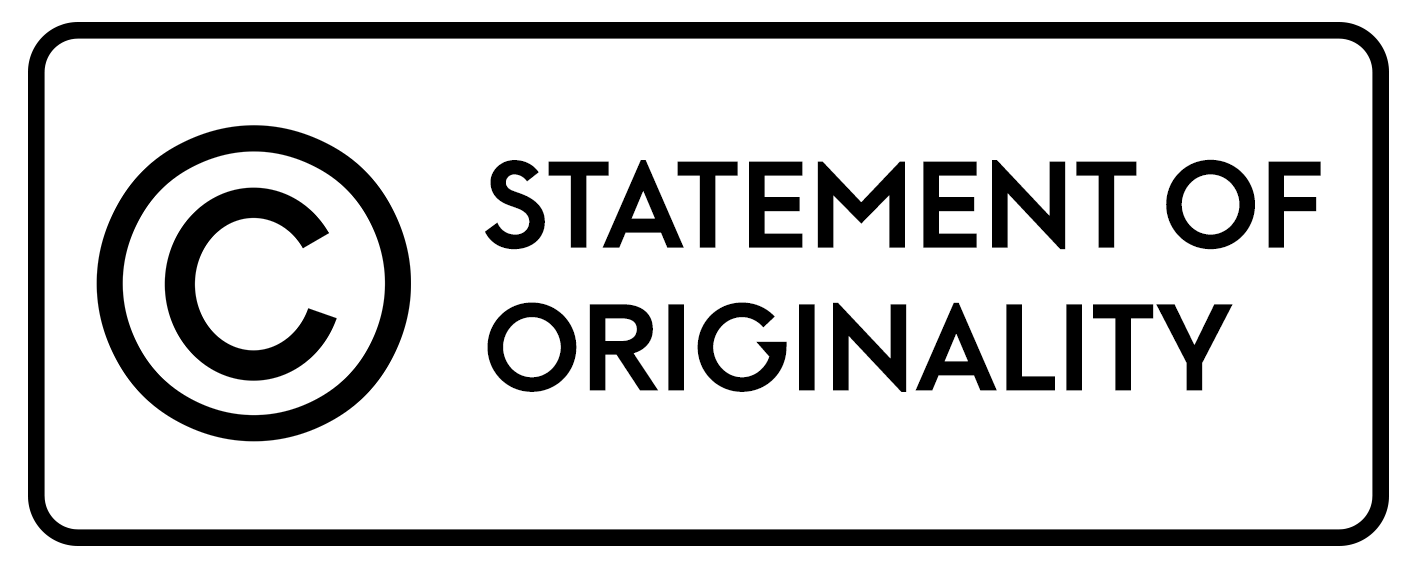Pengaruh Penggunaan Media Pembelajaran Berbasis Digital Aplikasi Kahoot dan Motivasi Belajar terhadap Minat Belajar Siswa Kelas V SD Katolik 03 Frater Don Bosco Manado
 Abstract views: 156
,
Abstract views: 156
,
 PDF (Bahasa Indonesia) downloads: 61
PDF (Bahasa Indonesia) downloads: 61
Abstract
This study aims to analyze the effect of using digital-based learning media, the Kahoot application, and learning motivation on the learning interests of fifth-grade students at SD Katolik 03 Frater Don Bosco Manado. The study used a quantitative approach with a non-probability sampling method, a saturated sampling technique, involving 75 students as samples. The data were analyzed using descriptive statistics, correlation, reliability, normality, linearity, simple regression, and multiple regression with the help of SPSS 25. The results of the study showed that: (1) there was a significant direct effect of digital-based learning media, the Kahoot application, on students' learning interests with a significance value of p = 0.000 <0.05 and a Determinant Coefficient (R²) of 77.8%, which means that the Kahoot media explains 77.8% of the variation in students' learning interests; (2) learning motivation has a significant direct effect on learning interests with p = 0.000 <0.05 and R² = 79.6%, indicating that learning motivation explains 79.6% of the variation in learning interests; (3) Simultaneously, Kahoot learning media and learning motivation together have a significant effect on learning interest with p = 0.000 < 0.05 and R² = 80.1%, which means that the two variables explain 80.1% of the variation in students' learning interest in science subjects. In conclusion, the use of digital learning media based on the Kahoot application and learning motivation significantly increases the learning interest of class V students at SD Katolik 03 Frater Don Bosco Manado.
Downloads
References
Icha Timart Diany Sinaga, Netto W. S. Rahan, & Abdul Rahman Azahari. (2022). Pengaruh Media Pembelajaran Kahoot Terhadap Motivasi Belajar Siswa SDN Nanga Bulik 6 Kabupaten Lamandau. Journal of Environment and Management, 3(1), 55–61. https://doi.org/10.37304/jem.v3i1.4286
Mokoginta, E. Y., Dapa, A. N. ., & Pati, L. A. M. (2025). Penerapan Model Pembelajaran Kooperatif Tipe Talking Stcik Dalam Meningkatkan Hasil Belajar Siswa Pada Mata Pelajaran Pendidikan Pancasila Kelas V Di SDN 5 Bilalang. Bloom Journal, 2(1), 167-175. Retrieved from https://ejurnal.unima.ac.id/index.php/bloom/article/view/11583
Ndraha, I. S., Mendrofa, R. N., & Lase, R. (2022). Analisis Hubungan Minat Belajar Dengan Hasil Belajar Matematika. Educativo: Jurnal Pendidikan, 1(2), 672–681. https://doi.org/10.56248/educativo.v1i2.92
Setiawan, A., Nugroho, W., & Widyaningtyas, D. (2022). Pengaruh Minat Belajar Terhadap Hasil Belajar Siswa Kelas Vi Sdn 1 Gamping. TANGGAP : Jurnal Riset Dan Inovasi Pendidikan Dasar, 2(2), 92–109. https://doi.org/10.55933/tjripd.v2i2.373
Yogi Fernando, Popi Andriani, & Hidayani Syam. (2024). Pentingnya Motivasi Belajar Dalam Meningkatkan Hasil Belajar Siswa. ALFIHRIS : Jurnal Inspirasi Pendidikan, 2(3), 61–68. https://doi.org/10.59246/alfihris.v2i3.843
Yulianti, A., Suyanti, & Kusuma, H. (2022). Pengaruh Media Pembelajaran Animasi Terhadap Minat Belajar Siswa Kelas IV Pada Pembelajaran Tematik. Prosiding Konferensi Ilmiah Dasar, 3, 742–749. https://prosiding.unipma.ac.id/index.php/KID/article/view/3062
Yuniarti, F., & Rakhmawati, D. (2021). Studi kasus: Game digital “Kahoot” dalam pengajaran Bahasa Inggris. Jurnal Ilmiah Bina Edukasi, 1(1), 46–59.
Copyright (c) 2025 Tessalonika Jesy Worang, Roos M. S. Tuerah, Richard Daniel Herdi Pangkey

This work is licensed under a Creative Commons Attribution 4.0 International License.

Jurnal Simki Pedagogia : https://jiped.org/index.php/JSP/index is licensed under a Creative Commons Attribution 4.0 International License.
















